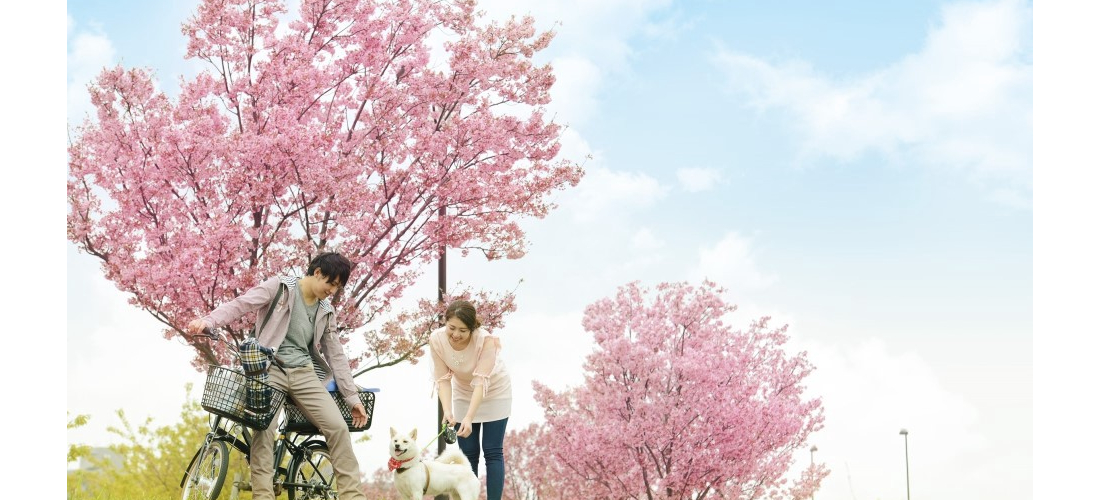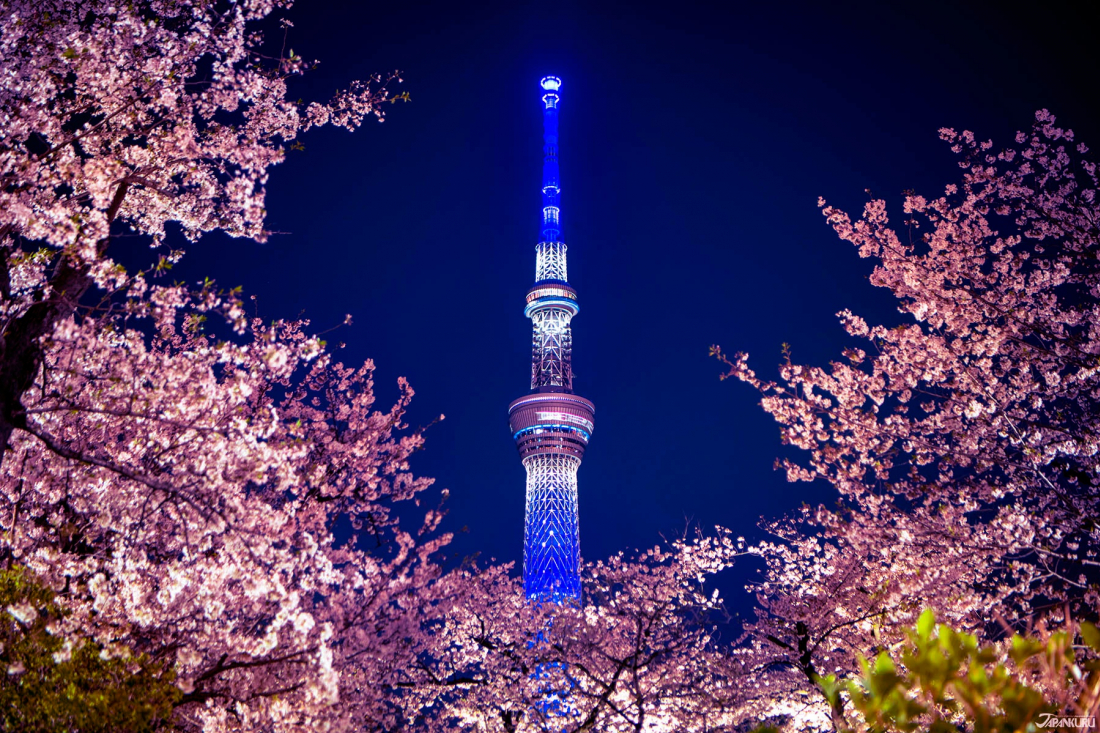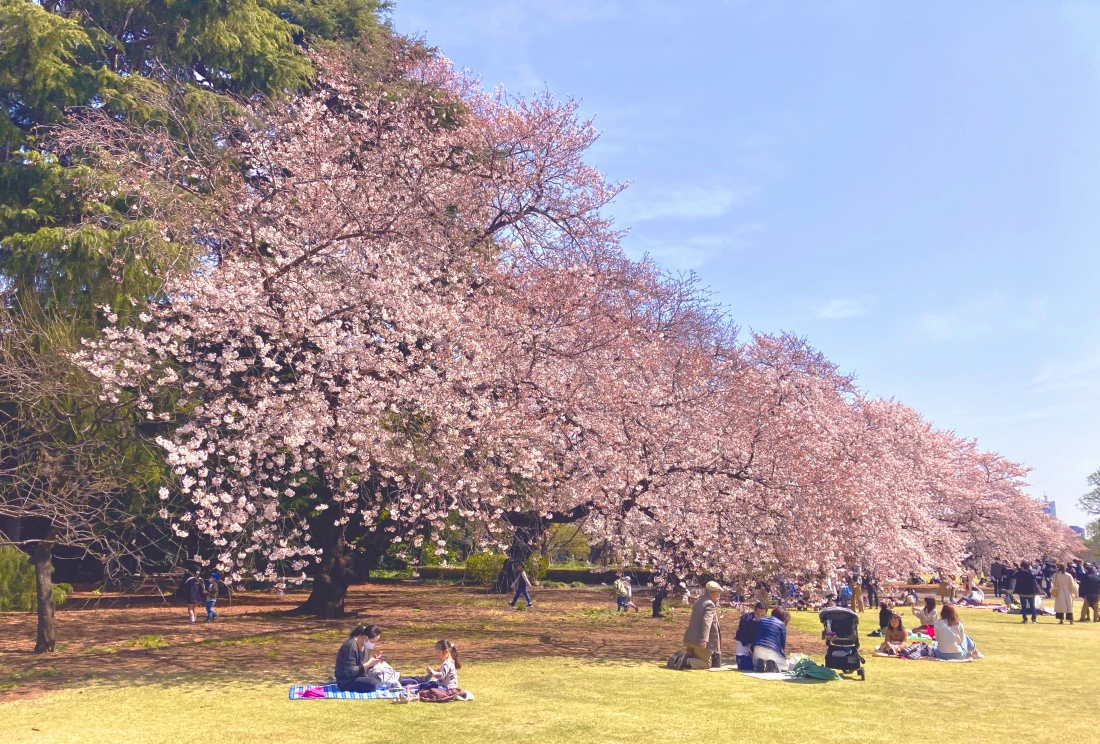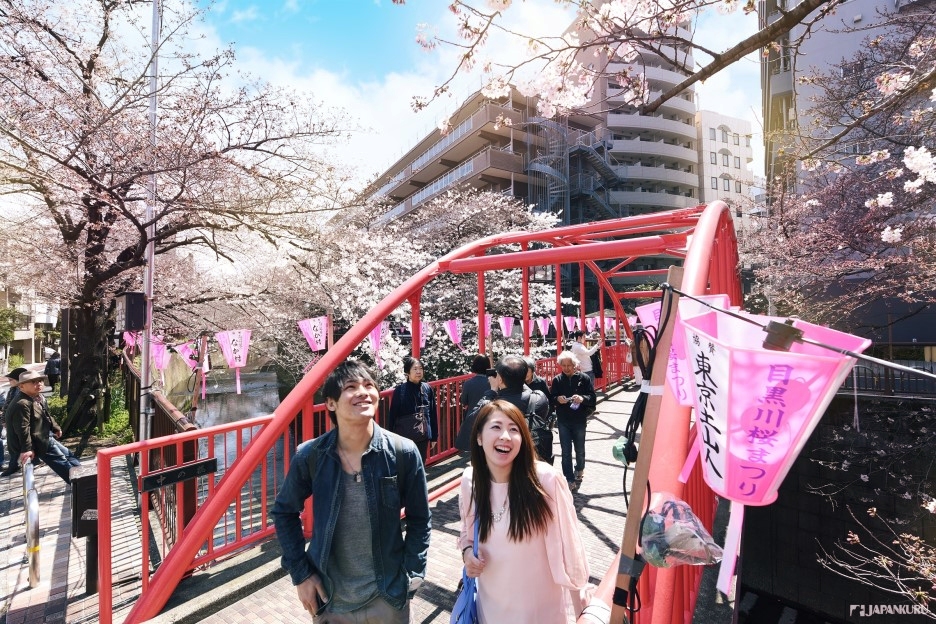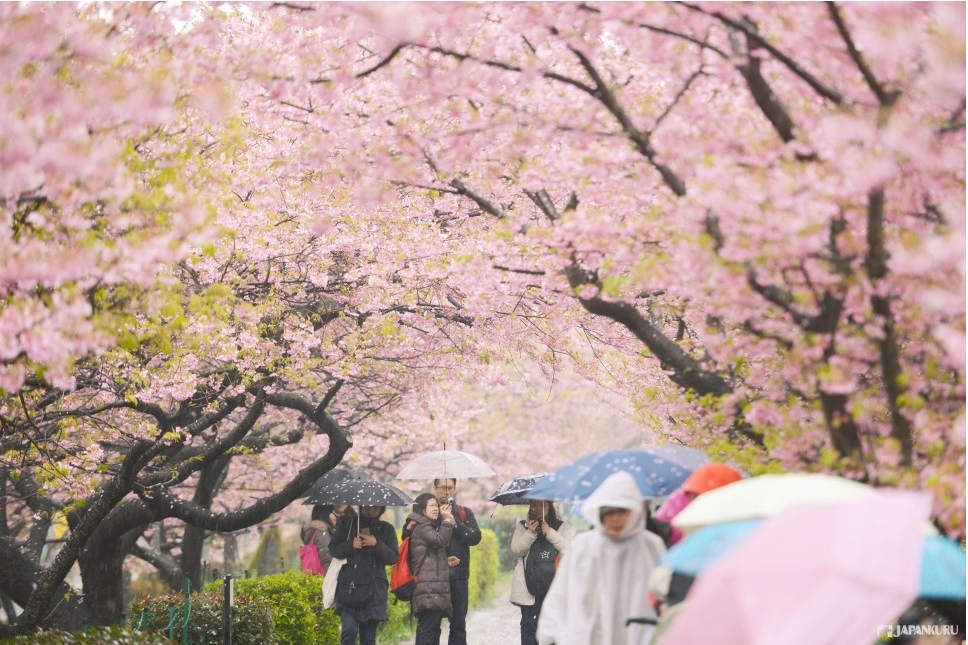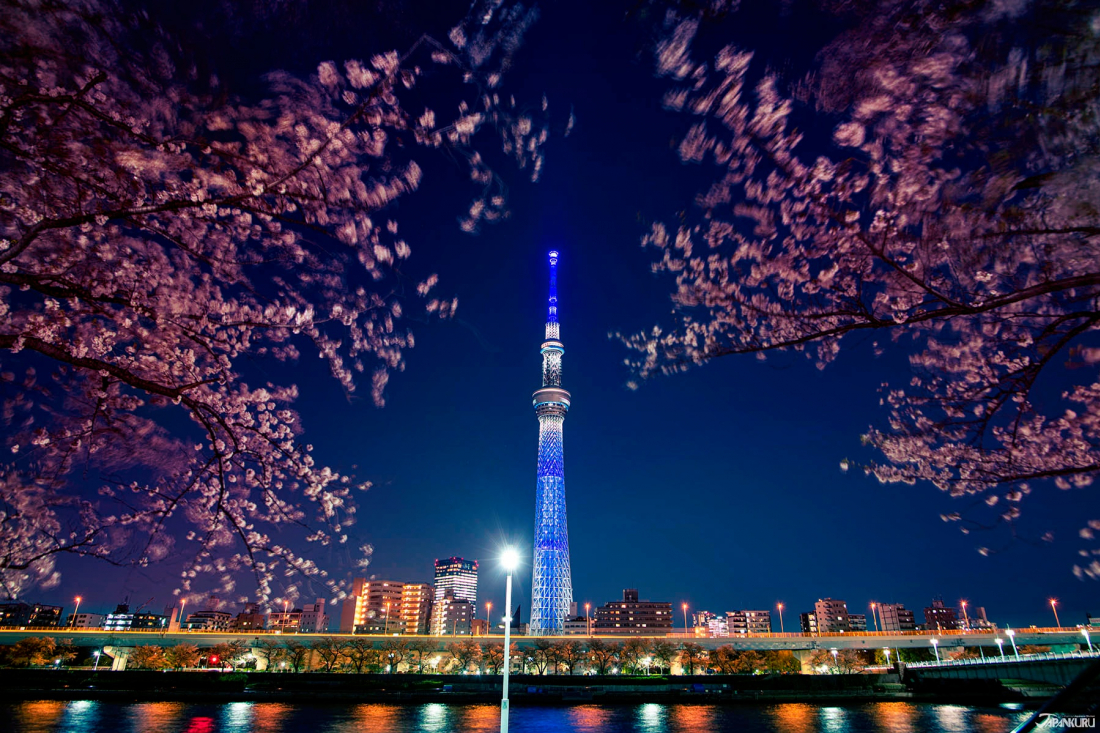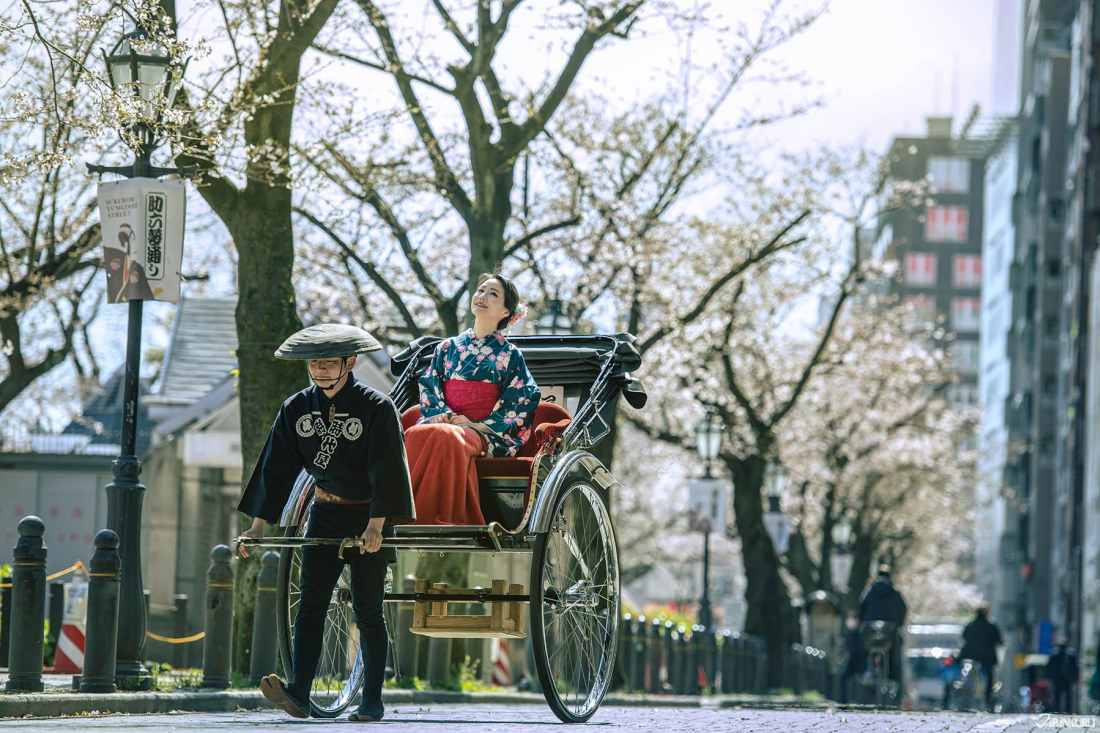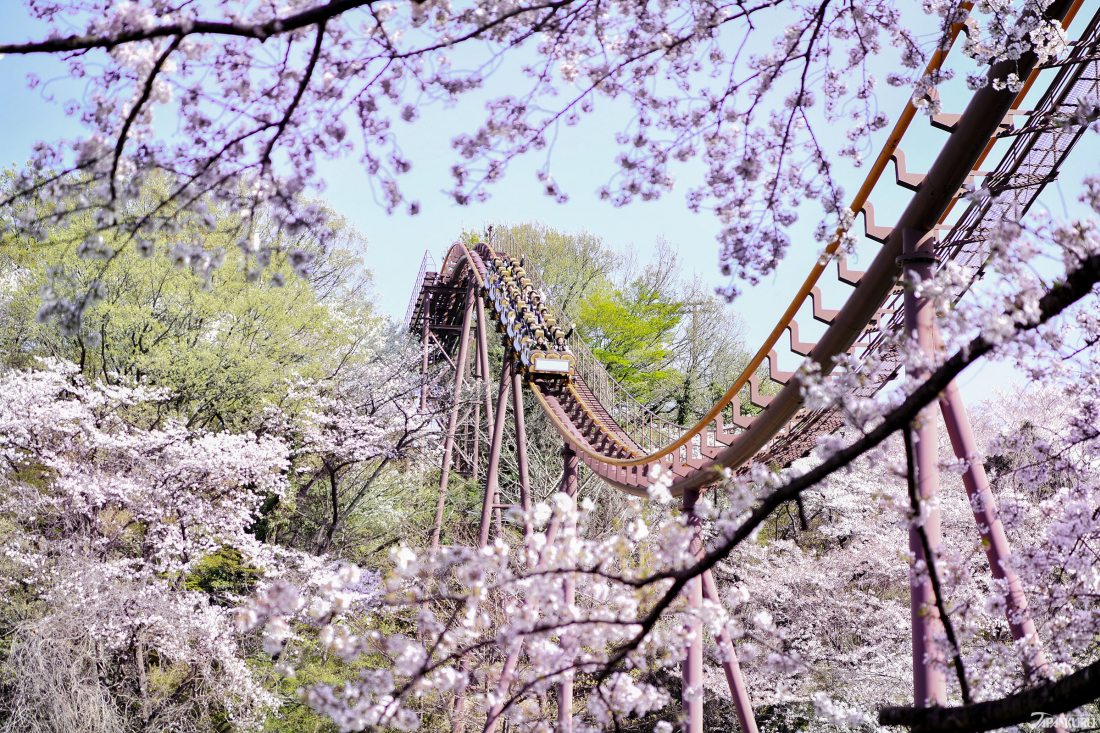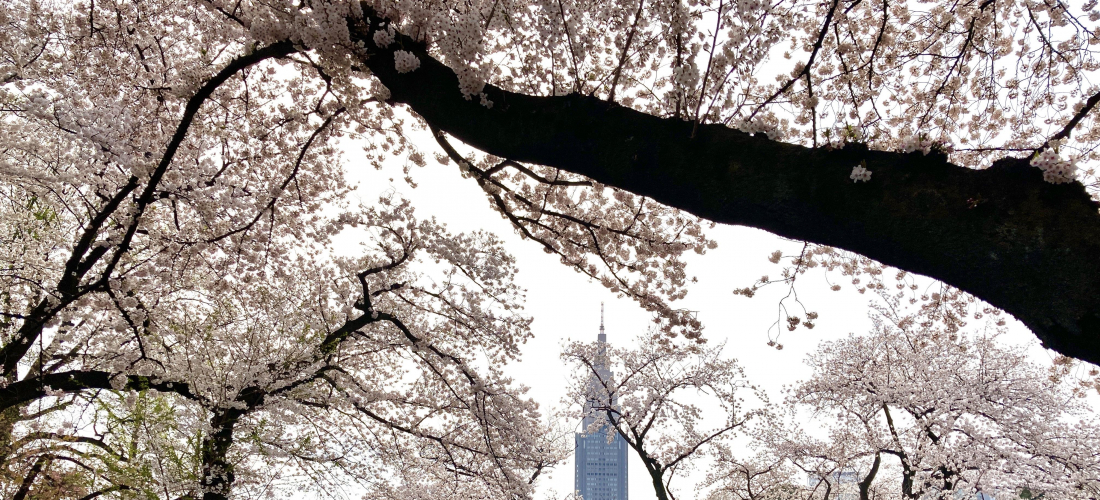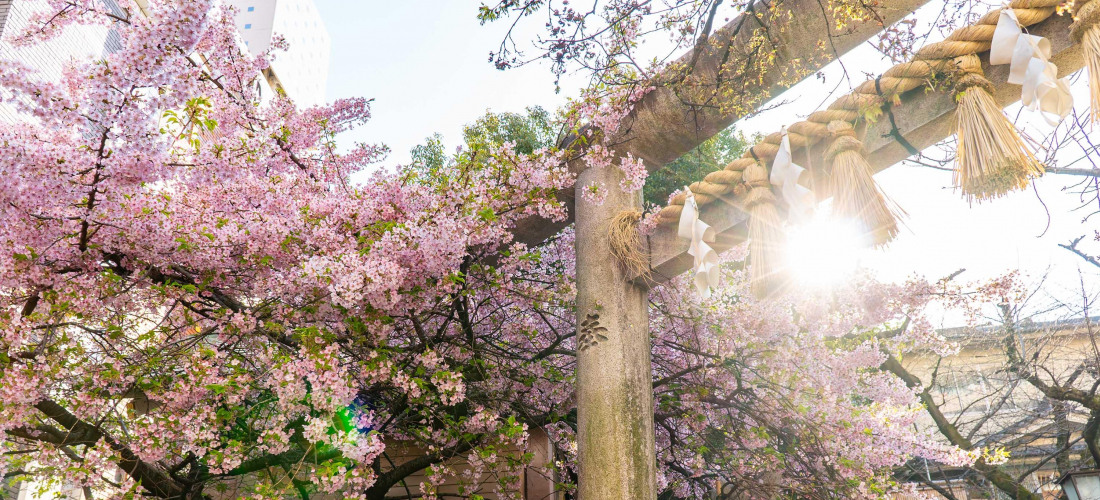CONTENTS
Cherry blossom season is here! Where will you be going for hanami this year?
Cherry blossom viewing has been a tradition in Japan for well over 1,000 years, and to this day the arrival of spring is heralded by the blooming of "sakura" (桜/cherry blossoms), and the subsequent rush of "hanami" (花見/cherry blossom viewing) parties in parks all over the country. Traditions haven't changed all that much, either, and a classic modern-day hanami get-together means gathering friends or family at the park, laying out a "blue sheet" tarp under a blossom-filled cherry tree, and either making or buying plenty of food or drink to picnic on. (Getting extremely drunk and loudly singing songs about the pink cherry blossoms is optional.) Of course, hanami can be enjoyed anywhere where there are cherry trees to admire, which could even be a home garden or a neighborhood park, but there are a few spots around Tokyo that have gained a reputation for their beautiful flowers and lovely surroundings. Here are just a few of Tokyo's most popular spots for walks among the cherry blossoms, nighttime viewings, and of course classic hanami picnics!
① Shinjuku Gyoen
This garden oasis in the middle of Shinjuku is popular all year round, but it becomes a go-to destination each spring thanks to more than 1,000 cherry trees of 65 different species that bloom throughout the park each year. With such a wide variety of tree types each reaching their peaks at different times, Shinjuku Gyoen has a particularly long cherry blossom season, and visitors come to see the flowers throughout late March and early April.
Despite its location in one of the busiest, densest urban areas in the world, with a view of Shinjuku's high-rise office buildings in the distance, Shinjuku Gyoen is actually full of spacious grassy lawns that are perfect for spreading a picnic blanket on and relaxing, classic hanami style. To ensure that visitors can take it easy and avoid feeling cramped or crowded while enjoying the flowers, particularly in the days of COVID-19, Shinjuku Gyoen has instituted a reservation system in recent years, limiting the number of entrants each day during the hanami season. (They're also banning alcohol, although bringing other food and drink is totally fine!)
Shinjuku Gyoen National Garden (新宿御苑)
11 Naitomachi, Shinjuku City, Tokyo
② Meguro River
With long lines of cherry trees on either side of the riverbank, all reaching their branches out over the water in a picturesque tunnel of pink, Meguro River is consistently one of the most popular places to go cherry blossom viewing in Tokyo. The sunny tree-lined path under the pale pink blossoms stretches for almost 4 km (2.5 miles) along the river, making it the perfect place for a walk under the flowers, and (at least in years before the pandemic) lanterns are hung along the way to light the trees with a soft glow even after sunset. When the flowers are at their peak, the cherry blossom festival set up along the river includes a huge number of stalls selling snacks of all kinds, but with the event currently canceled due to COVID-19, visitors can instead grab a cup of coffee from the nearby Starbucks Roastery to enjoy during their sakura stroll. Limited space along the banks means there's not much space for picnics, but Meguro is located just a little bit south of Harajuku and Shibuya, so those who want to stretch out can stop by Yoyogi Park as well!
Why are there so many trees along the Meguro River? It's actually a very practical choice dating back to the Edo period (1603-1868), when cherry trees were often planted on riverbanks in order to avoid erosion and prevent the river from flooding! It turns out that every traveler who comes to Meguro River to enjoy the cherry blossoms is, in a way, playing a part in the safety of the Meguro neighborhood!
Meguro River (目黒川)
Nakameguro, Meguro City, Tokyo
③ Ueno Park
For much of the year, Ueno Park is known for the Ueno Zoo, temples, shrines, and a whole variety of museums, but each spring a wave of hanami-seekers arrive at the park armed with snacks and tarps, and ready to relax under the flowers! Long paths throughout Ueno Park are lined with about 1,000 cherry trees, creating seemingly unending vistas of pink petals, and canopies of flower-laden branches overhead. Unfortunately, the COVID pandemic has temporarily changed Ueno Park from a picnic spot into another walking spot, but tired cherry blossom viewers can always take a break at one of the park's three cafes, find a seat by the large fountain at one end of the park, or just stop in at one of the many museums for a quiet moment.
Ueno Park (上野恩賜公園)
Uenokoen, Taito City, Tokyo
④ Sumida Park
Sumida Park runs along Sumida River, a broad swath of water that runs through the area between Asakusa and Tokyo Skytree, and it's a perennial favorite for Asakusa sightseers during cherry blossom season. Just a minute or two away from Asakusa's famous Sensoji Temple on foot, it's a great place to enjoy the spring weather and the beautiful flowers, find a little breathing room away from the temple crowds! The path along the riverside is lined with cherry blossom trees, whose pink petals go flying in the fresh spring breeze coming off the water, and the whole area offers a fantastic view of Tokyo Skytree surrounded by cherry blossoms. At night, the trees are partially lit, and Skytree glows from across the water, making for a uniquely beautiful hanami view.
Asakusa is also the go-to spot in Tokyo for rides in a rickshaw, the human-powered pull carts that have been a popular form of transportation in the area since the 1800s! Just say the word, and the rickshaw drivers would be happy to take you down the road next to the park to enjoy the cherry blossoms from a whole new point of view. To go the extra mile, you can even rent a kimono first from one of many nearby shops!
Sumida Park (隅田公園)
1 Hanakawado, Taito City, Tokyo
⑤ Chidorigafuchi Park
Cherry Blossom Viewing All Around Tokyo
The city of Tokyo is a big place, and while Shinjuku Gyoen, Meguro River, Ueno Park, Sumida Park, and Chidorigafuchi Park are consistent favorites for locals and travelers alike, there are just about endless options for enjoying the cherry blossoms that bloom each spring. Green spaces like Inokashira Park, Yoyogi Park, and Hibiya Park are some of the city's other popular hanami spots, and each year the enormous weeping cherry blossom tree at Rikugien Garden draws a huge crowd to admire the majestic flow of its long branches. Even Yomiuriland, the sprawling amusement park on the border of Tokyo and Kawasaki, is known to turn pink each spring, and visitors come to sweep through the trees on the roller coasters and admire the park's botanical garden. Plus, there are cherry blossom viewing events both indoors and out! Whether you visit Tokyo's go-to hanami spots, or find your own favorite place to enjoy the flowers, don't miss the chance to make the most out of cherry blossom season!
For more info and updates from Japan, check Japankuru for new articles, and don't forget to follow us on Twitter, Instagram, and Facebook!
Details
NAME:Tokyo Hanami
PROFILE
Follow us @Japankuru on Facebook, Instagram, and Twitter!
COMMENT
FEATURED MEDIA
VIEW MORE
Narita Airport Tax-Free Shopping List 나리타공항 면세점 쇼핑 리스트 #pr #calbee #jagapokkuru #japanesesnacks #japanesefood #japanesesouvenir #japantravel #japantrip #naritaairport #hokkaido #나리타국제공항 #나리타공항면세점 #나리타공항면세점과자 #일본공항면세점 #일본기념품쇼핑리스트추천 #공항면세점쇼핑리스트 #일본과자추천 #면세점일본과자 #일본기념품추천 #일본과자 #자가폿쿠루 #일본간식 #일본과자쇼핑 #일본면세점필수템 #일본기념품쇼핑

Asakusa's Sanja Matsuri, one of the biggest festivals in all of Tokyo, is almost here! Make sure you check out the festival route so you don't miss all the festivities this May. #asakusa #sanjafestival #sanjamatsuri #asakusashrine #sensoji #sensojitemple #japanesefestival #shintoshrine #japaneseculture #tokyo #tokyotrip #tokyotravel #asakusasightseeing #matsuri #japantrip #japantravel #springinjapan #tokyotravel #japankuru #산자마츠리 #아사쿠사 #일본마츠리 #일본여행 #일본5월

Odaiba's DiverCity Tokyo Plaza is home to the famous real-size 20m-tall Unicorn Gundam, and the popular shopping center has even more Gundam on the inside! Check out the Gundam Base Tokyo on the 7th floor for shelves upon shelves of Gunpla, and the Gundam Base Tokyo Annex on the 2nd floor for cool anime merchandise. Both shops have tons of limited-edition items! #pr #odaiba #tokyo #tokyotrip #japantrip #japantravel #PR #divercity #divercitytokyoplaza #tokyoshopping #gundam #unicorngundam #gundambasetokyo #anime #otaku #gunpla #japankuru #오다이바 #다이바시티도쿄 #오다이바건담 #건담 #일본건담 #건프라 #건담베이스도쿄

Evangelion, in miniature!? Tokyo's SMALL WORLDS Miniature Museum is actually a must-see for anime lovers, thanks to the tiny Evangelion Hangar and Tokyo-III... plus a whole universe of other scenes both real and fictional. #smallworlds #smallworldstokyo #tokyotrip #tokyotravel #evangelion #eva #anime #miniature #miniatures #animefigure #japantrip #japantravel #에반게리온 #스몰월드 #에반겔리온 #スモールワールズ #오다이바 #아리아케

Have you sat down for a snack at Sumida Aquarium yet? This aquarium next to Tokyo Skytree is known for its penguins and garden eels, but we can't get enough of their cute snacks! There are lots of good seats around the aquarium, too, so it almost feels like one big cafe. 🐧 • Find out more at Japankuru.com! (Link in bio.) • #japankuru #sumidaaquarium #skytree #tokyoskytree #solamachi #sumida #tokyo #tokyotrip #tokyotravel #aquarium #japanesesweets #themecafe #すみだ水族館 #Japan #日本 #일본 #Japon #ญี่ปุ่น #Japão #япония #japantravel #日本旅行 #日本旅遊 #japan_of_insta #japantrip #traveljapan #japan🇯🇵 #igerstokyo #explorejapan

For anime fans, the Evangelion areas at Small Worlds Miniature Museum are a must see! The tiny miniature people in the Evangelion Hangar look like ants beneath the moving Unit-01, Unit-00, and Unit-02! And over in Tokyo-III, characters like Shinji, Rei, and Katsuragi live life on a miniature scale. #odaiba #tokyo #tokyotrip #japantrip #japantravel #ariake #smallworlds #miniaturemuseum #smallworldstokyo #tokyotravel #evangelion #eva #anime #miniature #miniatures #animefigure #japankuru #스몰월드 #에반게리온 #오다이바 #오다이바관광 #오다이바스몰월드 #미니어쳐

